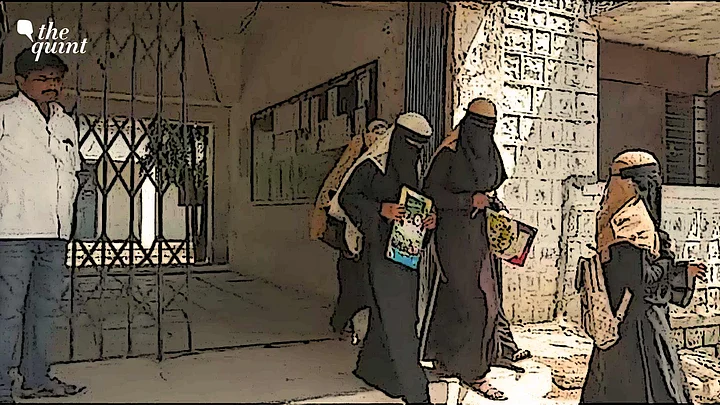Almost a year after hijab was prohibited in educational institutions in Karnataka, a People's Union of Civil Liberties (PUCL) report on the impact of the ban has revealed disturbing details of educational institutions and the police collectively preventing hijab-wearing students from attending classes.
What does the report say? The report released on Monday, 9 January, revealed Muslim students were prevented from pursuing education even before the High Court of Karnataka passed its judgment prohibiting hijab in schools and colleges on 15 March 2022. The academic year 2022-23 has so far seen Muslim women dropping out of college and classrooms getting polarised on the basis of religion.
What research was the report based on? PUCL's research dwelt on the data collected and interviews done in five districts of Karnataka including Hassan, Dakshina Kannada, Udupi, Raichur, and Shivamogga.
What's happened over the last year?
On 31 December 2021, Government PU College for Girls, Udupi banned hijab, preventing six Muslim students from attending classes.
On 3 January 2022, Hindu students of Government Degree and PU College Kundapur wore saffron shawls to demand a ban on hijab in their college. Protest spread to other colleges.
On 5 February 2022, Karnataka's Pre-University (PU) Education Department banned hijab and other forms of religious clothing in educational institutions.
On 8 February 2022, Karnataka High Court began hearing petitions challenging the ban on hijab.
On 15 March 2022, Karnataka HC passed final order banning hijab in higher educational institutions.
On 13 October 2022, Supreme Court of India issued a split verdict on hijab ban and the matter got referred to the Chief Justice of India, who is expected to constitute a larger bench.
Meanwhile, thousands of Muslim women students were prevented from attending classes and many dropped out, the report found.
How did colleges deal with the hijab ban? While the colleges implemented the ban on hijab, the administrative officers and teachers could no prevent polarisation of classrooms based on religious differences, the PUCL report found. In many instances students of other faiths stopped sharing educational material with Muslim students who were missing classes.
The report also found:
Muslim students were prevented from writing examination.
Many Muslim students lost an entire year of education.
While some dropped out, others had to enroll for repeating the academic year.
Muslim students underwent emotional and mental turmoil as college managements failed to address their concerns.
This meant: Muslims students were denied their right to education.
How did the state respond? While the colleges were apathetic towards the plight of Muslim students, the state's grievance redressal mechanism too failed to support them. Both the police, who should have prevented attacks on Muslim students, and district administration, who should have prevented colleges from discriminating against Muslim students, failed them, the report found.
A student's statement to the PUCL research team read:
"Boys of my college told the girls that we should carry weapons if we want to be safe. Many students would even come and pick fights with us even if we were just standing in the college premises."
What did the police and deputy commissioners do? As large number of police personnel were deployed at educational institutions to prevent law and order breakdown, Muslim students felt unsafe and monitored, the report found.
The police took videos and photographs of Muslim women students in hijab and singled them out instead of preventing those who were threatening them, the report found.
Neither the police nor the district administrations prevented segregation on the basis of religion and several colleges started making Muslim women students sit in separate classrooms.
Meaning, the right to dignity of Muslim women students was adversely affected in the past year, with the state government failing to prevent polarisation.
The PUCL report, however, has not given data on the number of Muslim women students who may have either dropped out or moved to minority educational institutions on account of the ban on hijab.
